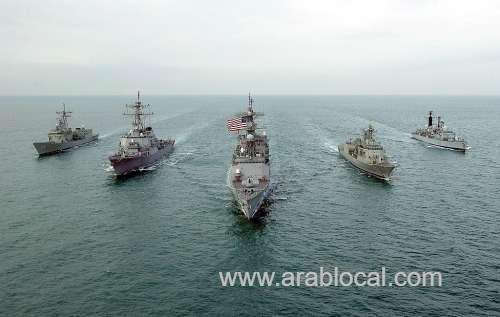
Naval forces operating in the Middle East region have achieved successful integration of unmanned platforms with traditionally manned ships and aircraft, significantly enhancing maritime security operations in the waters surrounding the Arabian Peninsula.
According to NAVCENT Public Affairs, the US 5th Fleet, comprised of seven task forces, seamlessly integrated 12 distinct unmanned platforms with manned ships to facilitate 'manned-unmanned teaming' operations. The primary objective of this initiative was to monitor the activities of the Iranian Navy and Islamic Revolutionary Guard Corps Navy (IRGCN) ships and small boats during their routine patrols in and around the Strait of Hormuz.
This operation played a crucial role in reinforcing presence in this strategically important chokepoint, which has witnessed Iran's unlawful seizure of internationally flagged merchant vessels. The operation utilized unmanned underwater vehicles (UUVs), unmanned surface vehicles (USVs), and unmanned aerial vehicles (UAVs).
Captain Joe Baggett, Director of Maritime Operations for US Naval Forces Central Command and US 5th Fleet, remarked, 'We have been using UAVs and UUVs in the region for years. Adding our new USVs and integrating all these platforms into fleet operations is how we envision conducting operations well into the future.' The operations involved the collaboration of sailors, marines, coast guardsmen, ships, and aircraft from Task Force 51/5 (Amphibious/Marine), Task Force 52 (Mine Countermeasures), Task Force 53 (Logistics), Task Force 55 (Surface Warfare), Task Force 56 (Expeditionary), Task Force 57 (Patrol/Reconnaissance), and Task Force 59 (Unmanned/Artificial Intelligence).
Vice Admiral Brad Cooper, Commander of US Naval Forces Central Command and US 5th Fleet, highlighted the significance of integrating these new multidomain unmanned platforms into routine fleet operations, stating that they provide increased 'eyes on the water,' thereby enhancing maritime domain awareness and bolstering deterrence in the region. He emphasized that these platforms collectively support the safe navigation and unhindered flow of commerce through crucial regional chokepoints, particularly around the Strait of Hormuz.
Vice Admiral Cooper further noted that this heightened maritime security acts as a deterrent against malicious activities and contributes to regional stability, benefiting all parties involved. The area of operations for US Naval Forces Central Command/US 5th Fleet encompasses approximately 2.5 million square miles of water, including the Arabian Gulf, Red Sea, Gulf of Oman, Gulf of Aden, Arabian Sea, and parts of the Indian Ocean. This expansive region spans 21 nations and includes three vital chokepoints at the Strait of Hormuz, the Suez Canal, and the Strait of Bab al Mandeb